
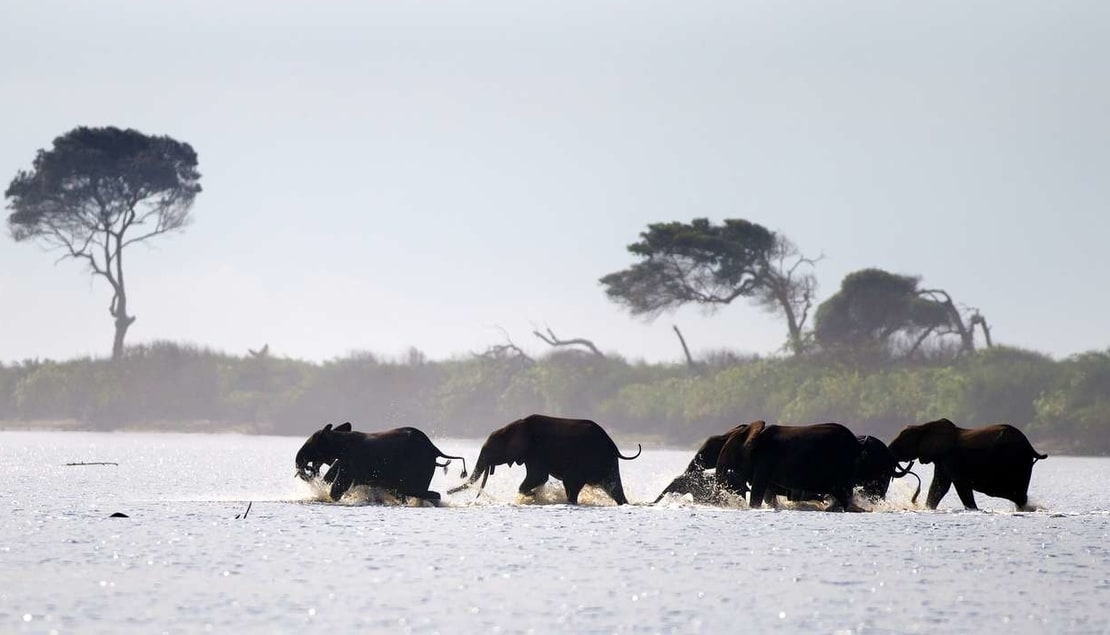

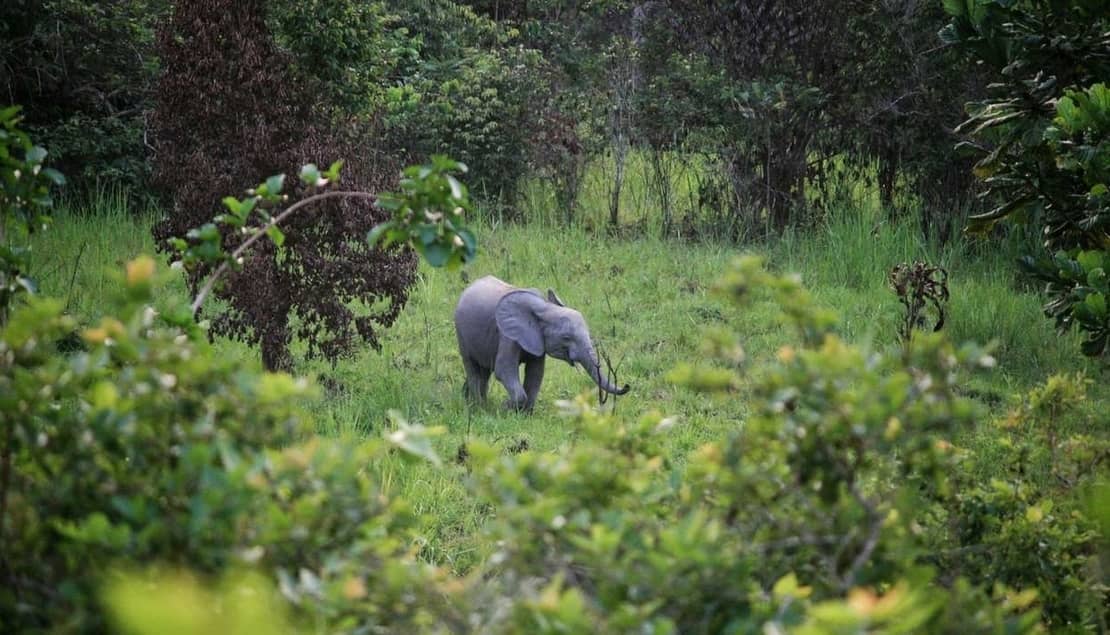
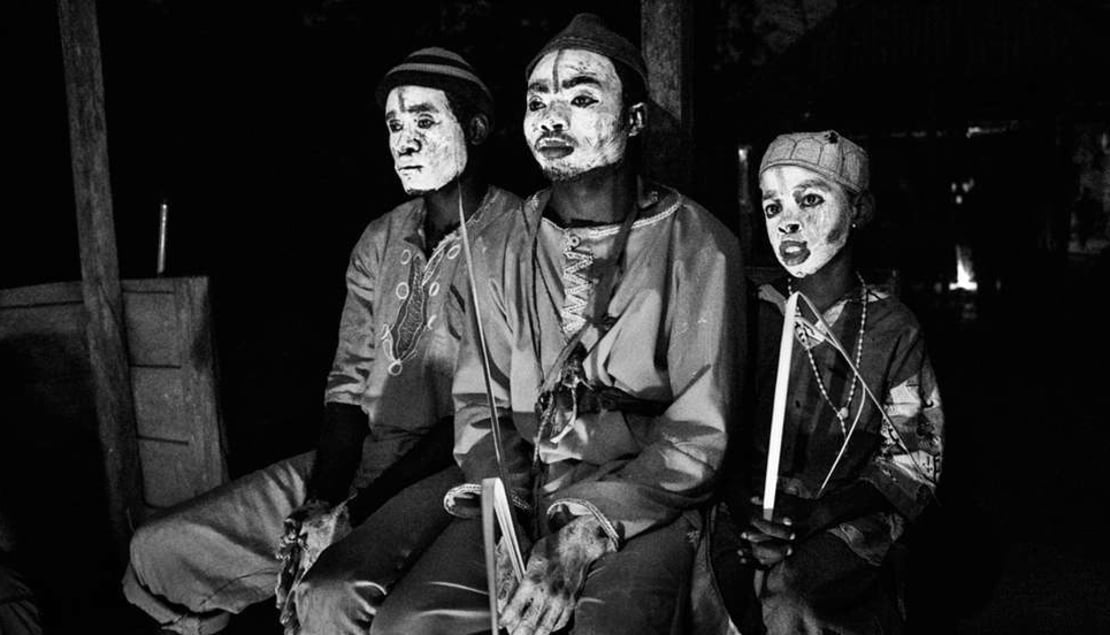
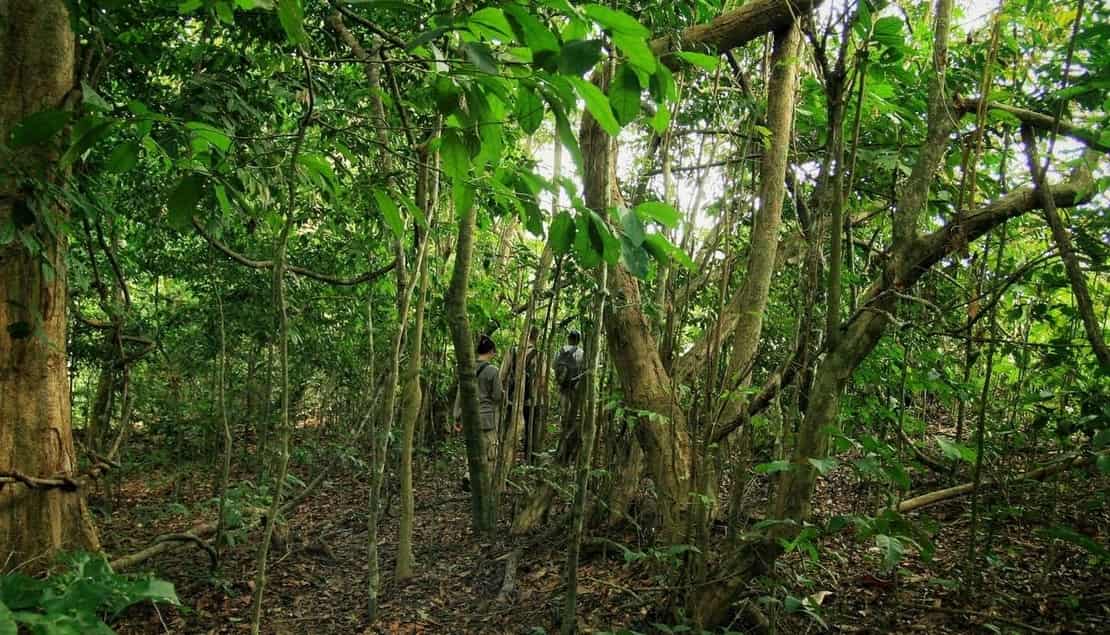
TRIP IS NOW FULL - CONTACT US FOR SIMILAR EXPERIENCES. This unique trip showcases all that Gabon has to offer, from its crashing waterfalls and captivating spiritual rituals to its beach-roaming wildlife and impenetrable rainforests. Explore a country that is a relative stranger to tourism, yet lays claim to some of the most remarkable biodiversity in West Africa.
- You will be accompanied by a local expert and one of our team
- Discover the vast Ivindo National Park, home to Langoue Bai
- Explore Loango National Park - encounter forest elephants and trek for lowland gorillas
- Experience an iboga-fuelled Bwiti ceremony, deep within Gabon's inaccessible interior
Begin in the oil-rich capital of Libreville, a surprising contrast to the rest of this jungle-strewn country. Set out on the Trans-Gabonais railway, heading deep into Gabon’s interior. Then, by car and boat, journey towards inaccessible Ivindo National Park.
Carpeted with ancient forest, this vast park remains largely unexplored. Here, search for West African wildlife within its forest clearings, culminating with the beautiful Langoue Bai – discovered by ecologist Mike Fay on his famous MegaTransect expedition.
Afterwards, follow the Ogooue River downstream, stopping at tiny Ndjole to experience Bwiti spiritualism first hand. Witness the intense iboga-fuelled rituals that are still an integral part of the lives of the local Fang people.
Follow the river a little further to the town of Lambarene and have a chance to visit the famous hospital, before taking to the river by boat and journeying to Loango National Park, Gabon’s most spectacular protected area.
Discover this incredible coastal rainforest, home to forest elephants, lowland gorillas and endemic birdlife. Stay at the country’s only true safari lodge, Loango Lodge, exploring on foot, by 4x4 and by boat.
Itinerary at a glance
Day 1: Libreville
The starting point for the group is the Tropicana Hotel. Please speak to one of our team regarding organising an arrival transfer for you.
Spread out along a sandy stretch of Gabon's Atlantic Coast, Libreville is one of the few places in this equatorial country that doesn't feel penned-in by jungle. Its population is surprisingly diverse, with its oil wealth attracting many people from surrounding West African countries.
Despite its historic name - relating to its founding by freed slaves - the city is largely modern in construction. However, it is still dotted with a number of older buildings, particularly churches, as well as a handful of museums.
Day 2: Libreville - Booue
City Tour of Libreville
Explore the city, learning about its history and visiting some of the more remarkable sights.
Transfer to railway station in the evening for train to Booue.
Travel overnight from Libreville to Booue by train.
Travel in first class, which is clean, comfortable and relatively spacious, if a little dated. The train does not always run on time, but it is the best way to reach Gabon's forest-covered interior. The road network is still very limited, with large portions made up of challenging dirt roads. Arrive in Booue in the early hours of the morning. The journey ought to last around eight hours.
Day 3: Booue - Ivindo National Park
Travel into Ivindo National Park
Walk for about 30 minutes to the Ivindo River, then travel for about an hour by pirogue (motorised canoe). Afterwards, spend two or three hours on the back of a quadbike, before walking for another three or four hours.
Practically untouched by tourism and hidden at the very heart of the country, this vast and inaccessible park is home to some of Gabon's finest primary forest. The Ivindo River winds its way through the park, offering access, as well as a succession of waterfalls. The largest of these are the spectacular Koungou Falls, which featured in the recent Tarzan movie.
The dense forest that carpets Ivindo forms part of a jungle ecosystem that extends east, all the way across both Congos. The park first gained recognition during conservationist Mike Fay's MegaTransect expedition, when he rediscovered Langoue Bai - a dramatic opening in the forest that attracts a remarkable number of jungle species and of huge ecological importance.
Day 4: Ivindo National Park
Explore Ivindo National Park
This vast park is thickly covered with forest, interrupted only by rivers and bais. These bais, or forest clearings, attract a range of animals due to their rich grasses and salt licks. Spend time exploring the park on foot, in search of its wildlife, visiting Langoue Bai.
Ivindo is still relatively unexplored and totally untamed, making wildlife encounters completely unpredictable. The dense jungle undoubtedly hides enormous numbers of animals, but seeing them is a challenge. Lowland gorillas, forest elephants, chimpanzees, forest buffalos, pangolins, mandrills and countless other rare species are all known to survive here.
Bais - with their excellent line of sight - offer the greatest chances of spotting wildlife, but even here, luck plays a huge part. Exploring Ivindo is more about the immersive, wild experience and the chance to discover one of Africa's last remaining patches of pristine rainforest.
Day 5: Ivindo National Park
Another day exploring Ivindo.
Day 6: Ivindo National Park - Booue - Ndjole
Travel to Booue
Return to Booue, beginning on foot and continuing by quadbike and pirogue. This is a journey of around seven or eight hours.
Travel by train from Booue to Ndjole.
A journey of only a few hours, in first class.
Ndjole lies above the Ogooue River, beside Gabon's main road into its thickly jungled interior. Small and fairly unremarkable, the town is notable only for being located in an area inhabited by the Fang people, who practice Bwiti - an unusual spiritual discipline that is only found in Gabon and Cameroon.
Day 7: Ndjole - Lambarene
Drive from Ndjole to Lambarene.
A journey of around three hours, on a tarred road. Afternoon at leisure, with time to relax.
Visit a Local Temple to See a Bwiti Ceremony
In spite of Gabon's colonisation by France and its indoctrination into Catholicism, traditional spiritual practices survive in the form of Bwiti rituals. Visit a local temple and witness these mesmerising ceremonies first-hand. Sit with the believers as they pray to the spirits and their ancestors. This is an entirely authentic and powerful experience.
Bwiti blends Christianity with animism and other practices, all fuelled by the consumption of iboga. This potent endemic plant has psychedelic properties, which the local people take advantage of by chewing the bark. Although practiced only by a handful of tribes in West Africa, Bwiti remains widespread in Gabon and is one of the official religions.
This relaxed pocket-sized city is spread across a broad section of the Ogooue River, with part of it occupying a large island in the river's centre. It is famed for its hospital, which was founded over a century ago by Dr Albert Schweitzer. This remarkable institution seems slightly out of place amidst Gabon's untamed jungle. Nevertheless, it is deserving of its excellent reputation and a visit to the hospital and associated museum are highlights of any stay.
Day 8: Lambarene
Stay in the morning to see the last of the Bwiti rituals.
Tour of the Old Hospital and Museum
Visit the Schweitzer Hospital, which is almost a century old and treats around 30,000 people a year. Supported by volunteers from around the world, this remarkable institution is run by a non-profit foundation. The small museum preserves its founder's lodgings, as well as some of his simple possessions.
Day 9: Lambarene - Omboue - Loango National Park
Travel by boat from Lambarene to Omboue
Set off down the Ogooue River. Travel all the way to the ocean, then head down the coast and into the Nkomi Lagoon, to the town of Omboue. This is a journey of around five hours.
Stop for lunch in front of the Fernan Vaz Lagoon.
Drive from Omboue to Loango Lodge
A journey of around two hours.
The jewel in Gabon's crown, Loango is the country's most famous park. Images of surfing hippos brought the park international recognition during the early 2000s and it is this unique convergence of coastal and jungle habitats that make Loango so unusual.
Whilst surfing hippos are far from a common sight and few visitors are lucky enough to spot them, forest elephants and buffalos strolling along the beach are a more common occurrence in the park. A mixture of lagoons, mangroves, rainforest and savannah, Loango is home to a wealth of different species. These include western lowland gorillas, which are now relatively habituated.
Day 10: Loango National Park
Explore Loango National Park
Spend time exploring Loango National Park, on foot, by 4x4 and by boat. The park's diverse landscape means that each mode of transport affords an entirely different experience.
Although it is the country's best known park, Loango is essentially still a wilderness. It offers a remarkable diversity of habitats and time here is as much about exploration, as it is about wildlife sightings.
However, it also offers a wealth of visible wildlife that is not found in other parks. Forest elephants, hippos and forest buffalos are all regularly spotted - on the beach, on the coastal savannah and within the forest. There are also many more elusive species, of which sightings can never be guaranteed, include numerous species of monkey, red river hogs and chimpanzees.
Day 11: Loango National Park
Optional Lowland Gorilla Trek
Have the opportunity to trek in search of Loango's western lowland gorillas - only recently habituated by conservationists. This experience is completely unlike gorilla trekking in Rwanda and Uganda, with the animals likely to be far more active and far less comfortable around humans. However, as with any gorilla trekking experience, it promises to be totally captivating and is one of just a handful of places where lowland gorillas have been habituated. (The permit for gorilla trekking costs an additional 500 euros).
Another day exploring.
Day 12: Loango National Park - Port Gentil - Libreville
Drive from Loango to Port Gentil
Travel by 4x4 along the new road that has been built to connect Loango with Port Gentil. This is a journey of around five hours.
Stop for lunch in Port Gentil.
Fly Port Gentil to Libreville.
Day 13: Libreville
Have the chance to explore Libreville before checkout by 12:00
THE GUIDE
The trip will be led by Guillermo Casasnovas, an expert in the region who has guided extensively throughout west and central Africa. Guillermo is based in neighbouring Cameroon and has been to Gabon many times over the past 15 years.
ACCOMPANIED BY ONE OF OUR TEAM
As with our other Pioneering Group Tours, this trip will be accompanied by one of the Steppes’ team. This not only means that a friendly face will be there at all times – willing to help out and deal with any issues that might arise – but it also gives us the chance to explore a destination that is just as new for us as it is for you.
This trip will be joined by Rob Gardiner, Steppes’ Africa Product and Commercial Manager. Although he has visited Gabon before – on his bicycle, bizarrely – he has never explored any of the areas visited on this trip.
HOW MUCH TRAVELLING IS THERE?
Gabon is a country where even the smallest infrastructure project is a battle between man and nature. The road network is limited; journeys are long and slow. Therefore, patience is required to reach anywhere in the interior. On this trip, the most convenient option is always chosen – whether that be a car, train, plane or boat. However, often there is only one way of getting somewhere in Gabon.
WHY AREN'T ALL MEALS INCLUDED?
This is unusual, but the nature of the trip means that a lot of the meals will be eaten at local restaurants, rather than at hotels. Aside from Loango Lodge, full board accommodation simply doesn’t exist.
HOW FIT DO I NEED TO BE?
Although this trip will be tiring because of the amount of travelling, the walking involved is relatively unchallenging, both in Ivindo and Loango. The pace will be slow and the terrain fairly gentle. However, the equatorial climate is a challenge in itself, so being reasonably fit is recommended.
WHAT IS THE ACCOMMODATION LIKE?
The emphasis is on cleanliness and comfort, rather than style, choosing the best available option in each location. The only exception to this is in Libreville, where there are much more luxurious options available. However, these tend to be a little soulless and are quite overpriced.
The only time when the accommodation is very basic is in Ivindo National Park, when you will be camping. This is a reflection of how off-the-beaten-track the park is, and is unavoidable.
WHAT WILDLIFE CAN I EXPECT TO SEE?
Seeing forest elephants, hippos and forest buffalos is pretty much guaranteed. And expect numerous glimpses of small monkeys in the canopy of Gabon’s forests throughout the trip. If you chose to go gorilla trekking in Loango, then you will also get to see western lowland gorillas.
Other than these species, it is hard to make predictions – wildlife in Gabon is far from predictable. However, there is a wealth of animal and bird life hidden in its forests; it’s simply a case of whether luck is on your side.
WHAT WILL THE WEATHER BE LIKE?
December and January are Gabon’s short dry season, when humidity is slightly lower and rain much less regular. However, still expect the weather to be warm and humid, given Gabon’s equatorial location. Skies tend to be clearer at this time of year, but this does mean the sun can be very strong during the middle of the day.
Start your journey
Group size: Min 6 / Max 10
Tour expert: Guillermo Casasnovas
Travel from: 11th January to 23rd January 2020
WHAT IS INCLUDED
- Accommodation throughout
- Accompaniment by a member of the Steppes team throughout
- Guiding by Guillermo Casasnovas throughout
- Internal flights
- Transfers by road, rail, boat and motorised canoe
Enquire for more information and availability.
We’re here to listen and inspire
to help you have the holiday of your lifetime.
We can do it all – advise, plan and book and we look after you on the journey.
Meet our peopleContact Concierge Traveller - A Virtuoso Travel Agency
Toll free 1800 047 047
International +61 2 8270 4800
Concierge House
332 Kent Street
Sydney NSW 2000
Australia
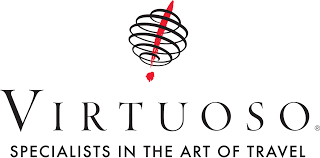
We are open 24hrs a day
-
London
-
Bangkok
-
Sydney
-
Honolulu
-
Rio de Janeiro

